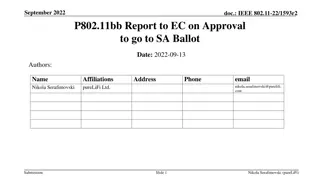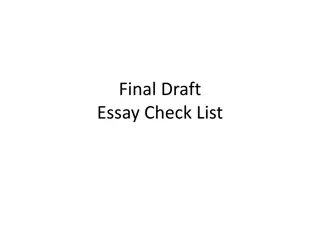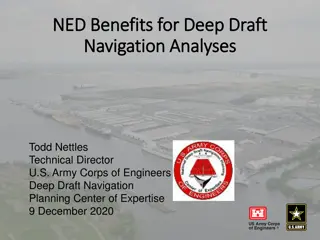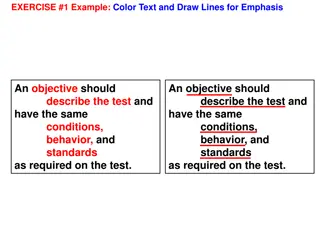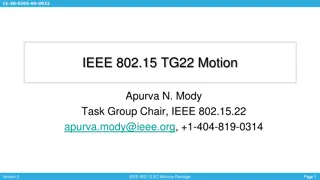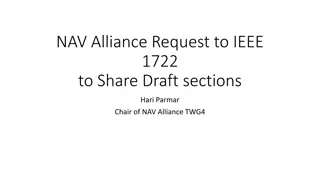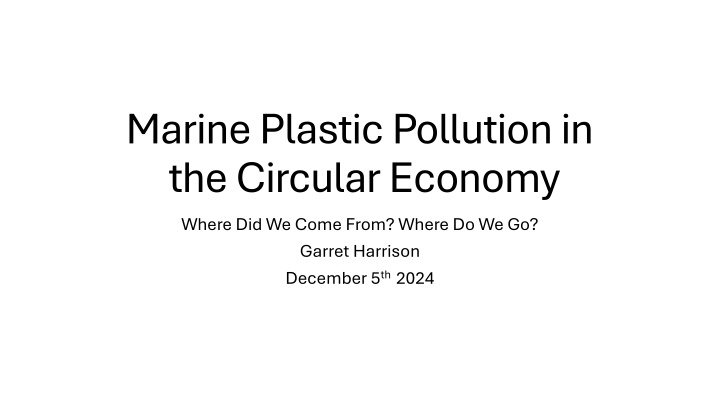
Marine Plastic Pollution in the Circular Economy: Challenges and Solutions
Explore the impact of marine plastic pollution and the transition towards a circular economy. Addressing issues like plastic consumption, waste management, and innovative solutions such as closed-loop recycling, biodegradable plastics, and ocean cleanup strategies. Discover the path to sustainability through policy measures, breakthrough innovations, and global collaboration.
Download Presentation

Please find below an Image/Link to download the presentation.
The content on the website is provided AS IS for your information and personal use only. It may not be sold, licensed, or shared on other websites without obtaining consent from the author. If you encounter any issues during the download, it is possible that the publisher has removed the file from their server.
You are allowed to download the files provided on this website for personal or commercial use, subject to the condition that they are used lawfully. All files are the property of their respective owners.
The content on the website is provided AS IS for your information and personal use only. It may not be sold, licensed, or shared on other websites without obtaining consent from the author.
E N D
Presentation Transcript
Marine Plastic Pollution in the Circular Economy Where Did We Come From? Where Do We Go? Garret Harrison December 5th 2024
The Problem with Plastics Increasing plastic consumption with no concern for end-of-life Ineffective management of waste Most waste that gets into water will end up in the ocean eventually Outsourcing plastic waste to Southeast Asia where the situation is even worse Fishing waste nets, etc. Marine life entanglement, ingestion, suffocation Microplastics accumulation
Enter: The Circular Economy Policy Measures Bans/Reductions on single use plastics Improved waste management International Agreements (e.g. EU Plastic Strategy) Basic Circular Principles Increased recyclability/reusability Bioplastics and biodegradable materials Public Awareness & Initiatives Increased public participation and demand
Breakthrough Innovations Closed-Loop Recycling Plastics which are able to be fully recycled, with no waste being generated, keeping it out of the oceans Biodegradable Plastics If it does end up in the ocean, it will not be there for long Advanced Sorting AI and robotics reduce contamination of plastic materials, allowing more of them to be recycled rather than end up as waste Alternatives Use of materials which are not plastic and do not linger in the oceans forever
Removal of Current Plastics Ocean Cleanup Passive Systems to collect plastics in one place (floating barriers) Skimmers (ships with nets) Drone or underwater robot development Microplastic Removal Filtration systems Magnetic polymers Biodegradation Development of special enzymes or microorganisms which can break down plastic waste. Combine with others
How Do We Get There? Investment in Infrastrcture Particularly in developing countries where most plastic is mishandled Globally Coordinated Regulation Public Sector Collaboration Incentives for companies to improve supply chain transparency, reduce plastic use and implement circular practices Consumer Engagement Public education Supporting circular-focused companies and products
A Vision of the Future With circular practices become more widespread, we have the potential to shape the future of our ocean ecosystems. A global commitment is needed press for action from governments, industries and fellow consumers Cleaner oceans, healthier ecosystems and animals, and a more sustainable future are on the horizon if we act Which do you Prefer? Which do you Prefer?











